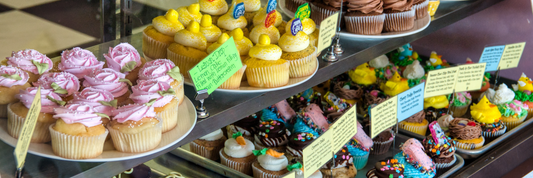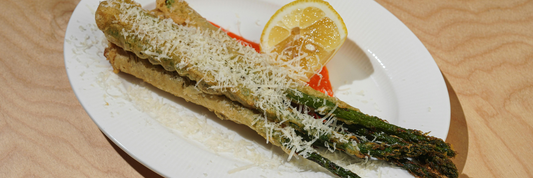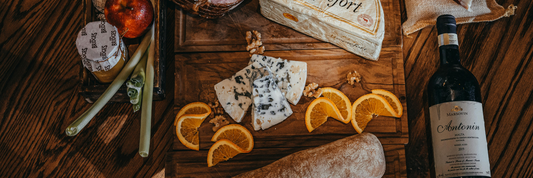Edible packaging is gaining popularity as an emerging trend in sustainable food packaging. Read the article below to find out if the packaging is appropriate for your business's needs.
What is edible packaging?
Edible packaging is a type of packaging created from food-safe materials. This is one of the alternatives to typical plastic packaging. Seaweed, starch, cellulose, proteins, or waxes are some of the ingredients utilized to create customizable packaging.
What is Rice Straw? Advantages and Disadvantages of Rice Straws
These materials are mixed with thin films or coatings that can be utilized to package food and beverages.
Edible packaging is a growing trend in the packaging market. It has the potential to grow over the next few years. According to Fortune Business Insights, the global edible packaging market is expected to expand from $170 million in 2023 to $1050 million by 2030. Several reasons are contributing to this, including:
- Growing environmental concerns: in recent years, client demand for sustainable products has increased. Meanwhile, the packaging is an excellent approach to making an impression on buyers while conveying the message of sustainability. Many companies have found that using eco-friendly packaging, such as edible packaging, is efficient.
- Advances in technology: With modern technology, different replacements for plastic are created. Aside from materials like bagasse, plant-based, edible packaging is a new step toward reducing plastic waste.
- Government support: Many countries, including Canada, are currently implementing various strategies to reduce plastic waste and pollution produced by plastic items. As a result, alternatives to plastic packaging, such as edible packaging, are also encouraged and supported.
Examples of edible packaging
Some popular edibles include edible straws, edible coffee cups, edible meal wraps, and edible capsules. They are made with rice crispy, seaweed, or starch.
Rice crispy edible packaging
Rice crispy is a sustainable and innovative alternative to standard plastic packaging made from rice crispy. This type of packaging can be created by combining rice crispies with other edible substances such as sugar, honey, and butter.
Seaweed edible packaging
This type of packaging is made up of seaweed and edible materials like water, glycerin, and agar-agar. This material can be utilized for producing a wide range of packaging, including bottles, straws, spoons, and food wrapping.
Starch edible packaging
Starch is a substance that's present in a variety of plants. Starch can be used to make different packaging sizes and shapes.
Cellulose packaging
Cellulose is a natural substance found in plant cell walls. Cellulose packing is edible. It can be used to make a wide range of shapes and sizes.
Advantages and disadvantages of edible packaging
Advantages of edible packaging
Edible packaging products are extremely important to the environment
- Reduce plastic pollution: edible packaging is biodegradable and compostable. As a result, edible packaging does not contribute to landfill waste or marine pollution.
- Natural resource: Edible packaging is produced from natural resources such as starch and seaweed.
- Safe to eat: edible packaging is manufactured from food-grade materials, combined with processing technology and tight standards, so there is no need to be concerned about consuming.
- Versatility: Edible packaging has many different applications. Bottles, spoons, bowls, and food wraps are examples of edible packaging.
Disadvantages of edible packaging
The following are some disadvantages of edible packaging:
- Price: Edible packaging is frequently more expensive than typical plastic packaging materials. As a consequence, businesses often think twice before adopting edible packaging.
- Shelf life: Edible packaging has a shorter shelf life than regular packaging materials. As a result, edible packaging must be transported and preserved with more caution.
- Functionality: Edible packaging may not be as adaptable as other types of plastic packaging.
- Flavor and texture: Due to special characteristics, the texture and flavor of edible packaging may not appeal to people.

Why you should consider edible packaging for your business
There are numerous reasons why businesses choose edible packaging, which is explained below:
- Sustainability: edible packaging is an eco-friendly product that is an excellent replacement for plastic packaging.
- Compliance with the law: Many nations, including Canada, have adopted regulations prohibiting the use of plastic packaging to reduce plastic waste. Using edible packaging is necessary and crucial for businesses.
- Brand image: For businesses, edible packaging effectively communicates the brand's message about sustainability and protecting the environment. This can help businesses gain consumer compassion while expanding their customer base.
- Product differentiation: When compared to traditional plastic packaging, edible packaging helps businesses differentiate their products.
Edible packaging in Canada
Currently, edible packaging is growing more popular in Canada, with a variety of items such as edible straws, edible spoons, etc., but edible packaging is still relatively new and not widely used. However, with rules prohibiting single-use plastic packaging products, the transition to an alternative material is unavoidable.
In brief, edible packaging is an alternative to plastic packaging. This is a new yet promising option that deserves to be reviewed by businesses due to its sustainability and functionality.




